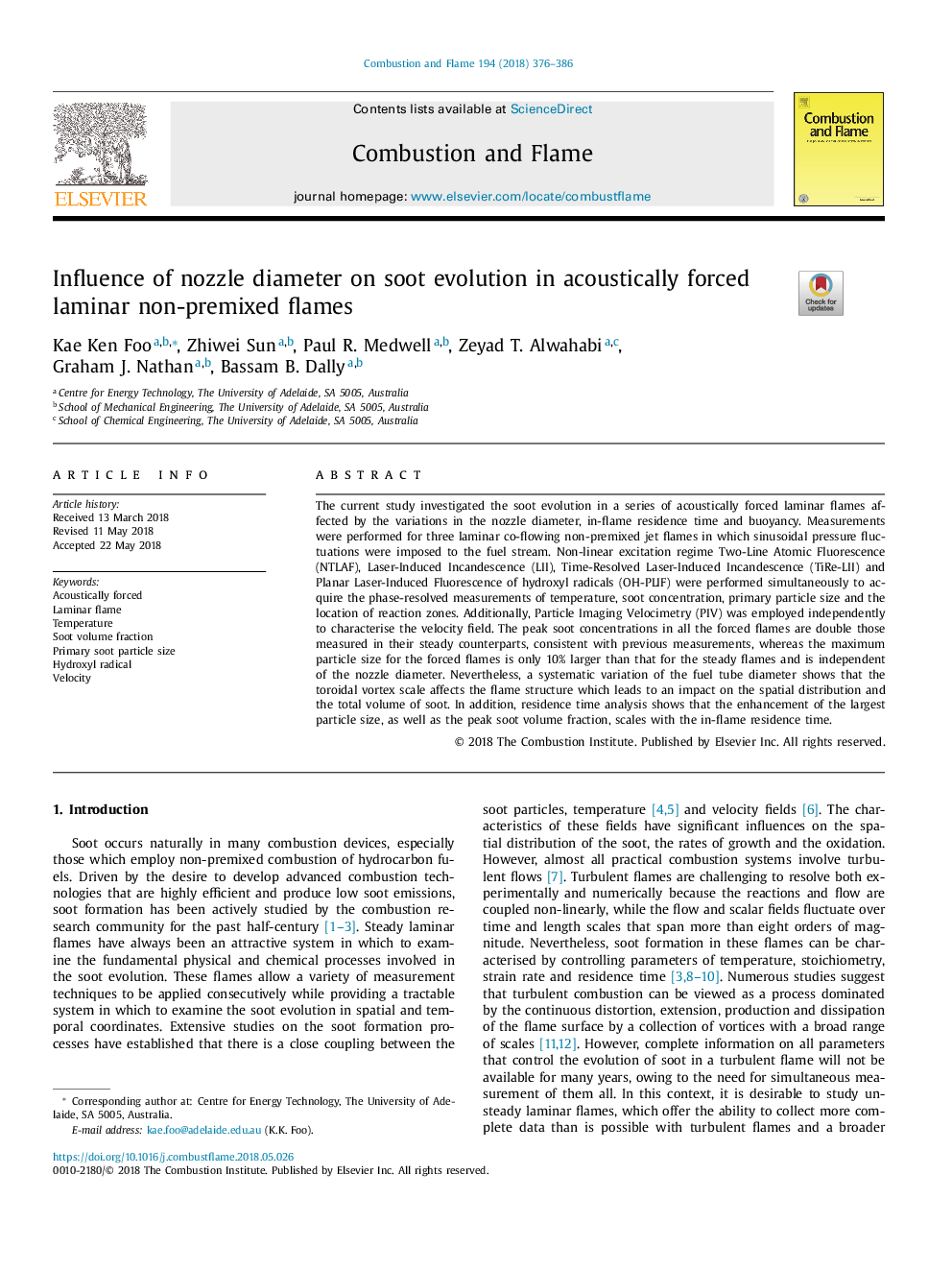| Article ID | Journal | Published Year | Pages | File Type |
|---|---|---|---|---|
| 6593503 | Combustion and Flame | 2018 | 11 Pages |
Abstract
The current study investigated the soot evolution in a series of acoustically forced laminar flames affected by the variations in the nozzle diameter, in-flame residence time and buoyancy. Measurements were performed for three laminar co-flowing non-premixed jet flames in which sinusoidal pressure fluctuations were imposed to the fuel stream. Non-linear excitation regime Two-Line Atomic Fluorescence (NTLAF), Laser-Induced Incandescence (LII), Time-Resolved Laser-Induced Incandescence (TiRe-LII) and Planar Laser-Induced Fluorescence of hydroxyl radicals (OH-PLIF) were performed simultaneously to acquire the phase-resolved measurements of temperature, soot concentration, primary particle size and the location of reaction zones. Additionally, Particle Imaging Velocimetry (PIV) was employed independently to characterise the velocity field. The peak soot concentrations in all the forced flames are double those measured in their steady counterparts, consistent with previous measurements, whereas the maximum particle size for the forced flames is only 10% larger than that for the steady flames and is independent of the nozzle diameter. Nevertheless, a systematic variation of the fuel tube diameter shows that the toroidal vortex scale affects the flame structure which leads to an impact on the spatial distribution and the total volume of soot. In addition, residence time analysis shows that the enhancement of the largest particle size, as well as the peak soot volume fraction, scales with the in-flame residence time.
Related Topics
Physical Sciences and Engineering
Chemical Engineering
Chemical Engineering (General)
Authors
Kae Ken Foo, Zhiwei Sun, Paul R. Medwell, Zeyad T. Alwahabi, Graham J. Nathan, Bassam B. Dally,
